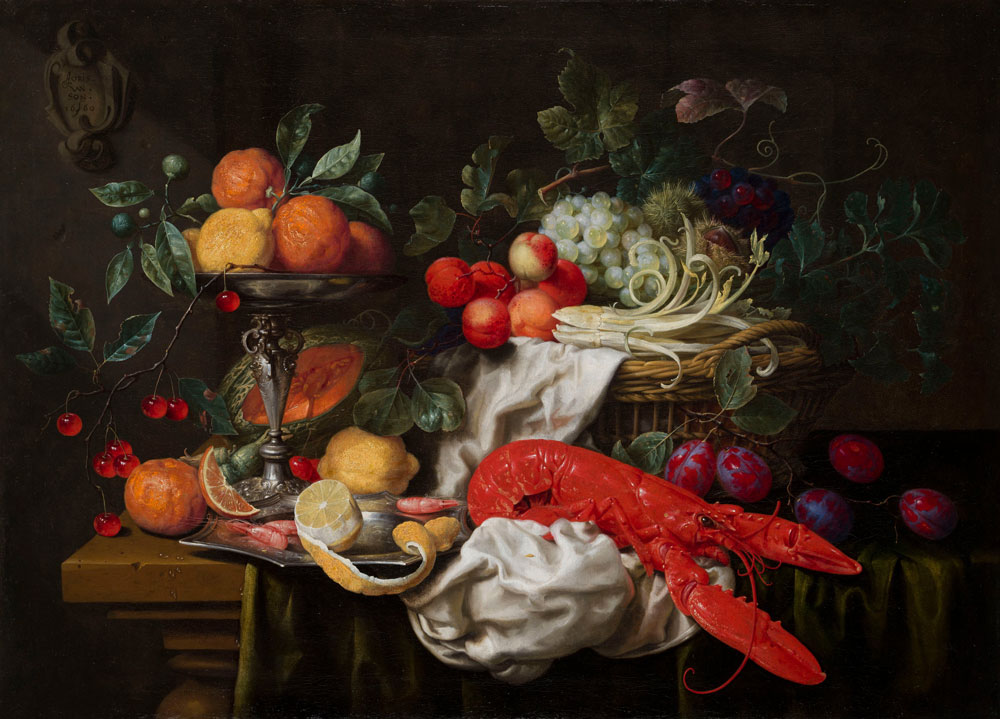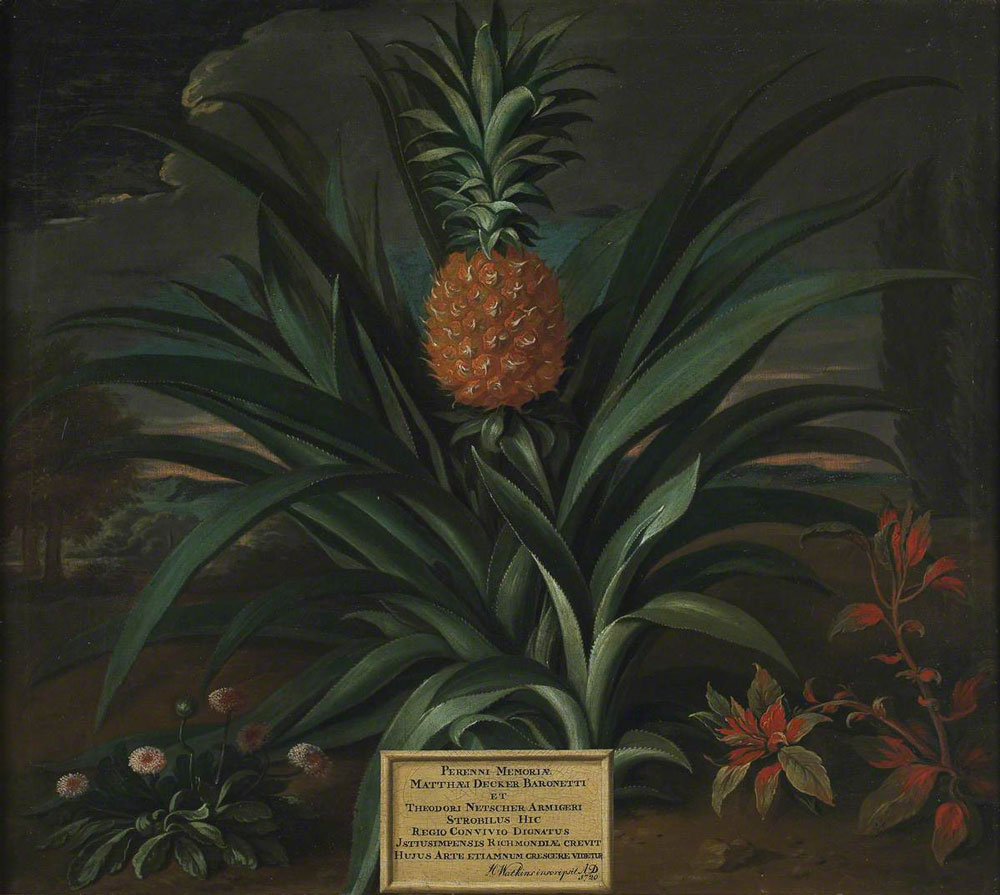Feast & Fast - The Art of Food in Europe, 1500-1800 | Fitzwilliam Museum
This exhibition does not over exert itself in explaining what its various food-themed paintings, sculptures, cartoons and installations may mean. Instead, the curators sensibly concentrate on spectacle, leaving the symbolic meanings of the food on display lightly touched-on or implicit. Happily, this means the show is perfectly pitched to those viewers who feel a bit over-bloated from the festive blowout.
Here’s an example of what I mean: Joris van Son’s Still-life with a lobster, which is in the museum’s permanent collection, and is the centrepiece of the exhibition. (Paintings from the Dutch Golden Age are very well-represented here.) It’s a virtuoso display of painterly craft, an elaborate, concentrated representation of the widest possible variety of textures, colours and light effects. Almost everything looks wonderful, edible!

Though on closer inspection, the cherry leaves on the left hand side of the canvas are blackened and withering. Consider the potential symbolic meanings and cultural interpretations for this. Is van Son commenting on the ephemerality of life? The inadvisability of sensual indulgence? Is he making a sly comment on the viewer’s impossible hungers, as the composition is itself impossible? (Both a lobster and a shrimp are collected together, though van Son’s audience would know that one should be eaten in summer, the other in autumn.)
There’s no sense of the human labour that created such a scene, beyond that of the artist. Though the citrus fruits which flank the lobster would have been costly imports from the Mediterranean.
Human labour takes centre stage for Theodorus Netscher’s prosaically-named Pineapple Grown in Sir Matthew Decker’s Garden at Richmond, Surrey. This pineapple is the first one to be grown in the British Isles, by Decker, after many failed attempts, as the plaque, also in the painting, explains. The pineapple ended up on the royal table of king George I.

This very special pineapple is symbolic of Anglo-Dutch cooperation, botanist and artist, as well as colonial plunder. It also looks very tasty. As befitting its specialness, the titular fruit is framed and lit like a risen Renaissance Christ.
My other favourite from the show is also from the Golden age: Adriaen Coorte’s small still life of a bunch of asparagus, glowing waxy, papery and white on its black background, constrained by a single lovingly-worked string.
Perhaps memories of this show will fade as quickly as those of a good meal. But, at this time of year, I found it deeply nourishing.
Feast & Fast: The Art of Food in Europe, 1500-1800 is at Fitzwilliam Museum (Cambridge). November 26 2019 - April 26 2020